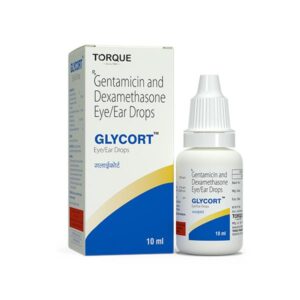GENTAMYCIN + SODIUM PROPYL PARABEN + SODIUM METHYL PARABEN
Gentamycin: Gentamycin is an antibiotic medication that belongs to the aminoglycoside class. It is primarily used for the treatment of various bacterial infections. It works by inhibiting the synthesis of bacterial proteins, thereby preventing the growth and spread of bacteria.
Gentamycin is commonly used to treat severe infections caused by aerobic and facultative gram-negative bacteria, including Escherichia coli, Klebsiella pneumoniae, Pseudomonas aeruginosa, and Proteus species. It may also be used in combination with other antibiotics to treat certain types of aerobic gram-positive bacteria and mycobacterial infections.
The dose of Gentamycin varies depending on the type and severity of the infection, as well as the patient’s age, weight, and kidney function. It is administered intravenously or intramuscularly, usually once or twice a day. The medication should be carefully dosed and monitored due to the risk of toxicity.
Common side effects of Gentamycin include nausea, vomiting, diarrhea, and stomach upset. It may also cause ototoxicity (ear damage leading to hearing loss or balance problems) and nephrotoxicity (kidney damage). These toxic effects are more likely to occur in patients with pre-existing kidney problems, those receiving higher doses or prolonged treatment, and the elderly.
It is important to note that Gentamycin should be used with caution in patients with pre-existing hearing or kidney problems, as well as in pregnant or breastfeeding women. Gentamycin may interact with other medications, so it is crucial to inform the healthcare provider about all the drugs being taken. A thorough medical evaluation and monitoring are necessary during treatment with Gentamycin to ensure its effectiveness and minimize potential side effects.
Sodium Propyl Paraben: Sodium Propyl Paraben is a medication that is commonly used as a preservative in cosmetics, food, and pharmaceutical products. It is also sometimes used as an antimicrobial agent in certain medications.
The main mechanism of action of Sodium Propyl Paraben is its ability to inhibit the growth of fungi, bacteria, and other microorganisms. It achieves this by interfering with the normal function of their cells and enzymes, thereby preventing their reproduction and survival.
As a preservative, Sodium Propyl Paraben is typically added to products in small amounts, ranging from 0.1% to 0.3%. The exact dosage will depend on the specific product and its intended use. It is important to note that Sodium Propyl Paraben is not intended for direct consumption or as a standalone medication. Instead, it is used in combination with other ingredients to ensure the safety and stability of various products.
While Sodium Propyl Paraben is generally regarded as safe for use, some individuals may experience side effects. Common side effects may include skin irritation, dermatitis, or allergic reactions. It is important to discontinue use and seek medical attention if any of these side effects occur.
It is worth mentioning that concerns have been raised regarding the potential estrogenic activity of parabens, including Sodium Propyl Paraben. Some studies have suggested that parabens may mimic estrogen hormone in the body, but more research is needed to fully understand the implications of this. Regulatory agencies such as the U.S. Food and Drug Administration (FDA) and the European Union’s Scientific Committee on Consumer Safety (SCCS) continue to evaluate the safety of parabens, including Sodium Propyl Paraben, in various consumer products.
It is always advisable to consult with a healthcare professional or read the product labels to determine the appropriate use and potential side effects of any specific product containing Sodium Propyl Paraben.
Sodium Methyl Paraben: Sodium Methyl Paraben is a commonly used preservative in various pharmaceutical and cosmetic products. It is an ester of p-hydroxybenzoic acid and is derived from para-hydroxybenzoic acid (PHBA).
Use:
Sodium Methyl Paraben is primarily used as a preservative in a wide range of products such as creams, lotions, ointments, shampoos, and liquid medications. It helps to prevent the growth of fungi, bacteria, and other microorganisms, thus extending the shelf life of these products and ensuring their safety.
Mechanism of Action:
As a preservative, Sodium Methyl Paraben works by inhibiting the growth and reproduction of microorganisms. It does this by interfering with the metabolic enzymes of the microorganisms, disrupting their normal cellular function, and leading to their death or inactivation.
Dose:
The dosage of Sodium Methyl Paraben varies depending on the specific product and its intended use. It is typically used in concentrations of 0.1% to 0.4% in cosmetic and personal care products, while in pharmaceuticals, the concentration can range from 0.01% to 0.2%. The recommended dosage should always be followed as mentioned on the product packaging or as prescribed by a healthcare professional.
Side Effects:
Sodium Methyl Paraben is generally considered safe at the recommended concentrations. However, some individuals may develop allergic reactions or sensitivities to this preservative. Common side effects may include skin irritation, redness, itching, or a rash. In rare cases, it can cause more severe allergic reactions such as swelling of the face, lips, or tongue, difficulty breathing, or tightness in the chest. If any of these side effects occur, immediate medical attention should be sought.
It is worth noting that there have been concerns regarding potential health risks associated with the long-term use of parabens, including Sodium Methyl Paraben. However, conclusive evidence is lacking and regulatory bodies like the FDA consider it safe at the approved concentrations in products.

